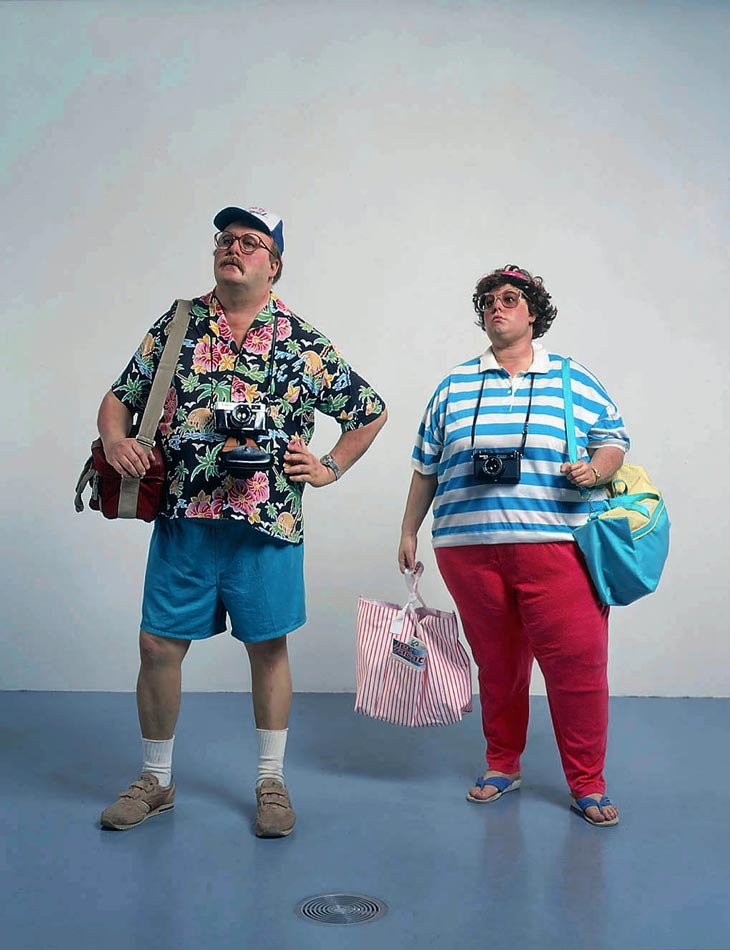Duane Hanson grew up in the American Midwest in the mid-1930s and concluded early on in life that he was “the only oddball in the place.” The precise place in question was a little town called Parkers Prairie, population just a few hundred; and Hanson, it seems, was the only person there with much interest in art. He painted, carved and modelled constantly. There was only one art book in the town library and it was permanently out on loan to him. He kept it in his bedroom, apparently. He particularly liked its illustrations of eighteenth-century portraits of the English aristocracy by Thomas Gainsborough and Sir Joshua Reynolds, and even made his own wooden replica of Gainsborough’s famous painting, The Blue Boy.
As it turned out Hanson would spend much of his life updating the Old Master portrait tradition, after his own fashion. His preferred medium however would not be oil on canvas, but artfully painted polyester resin; and his subjects would not be grand milords or miladies but ordinary, workaday Americans. Between about 1965, when he first perfected his working method, and 1995, the date of his premature death from cancer (caused, it seems, by the carcinogenic properties of the very plastics from which he made his work), Hanson created about 114 “sculptures from life”. Each was originally cast from living models, one section of the body after another, then painstakingly reassembled, coloured by hand, given hair – strand by strand – and finally clothed. The results are vivid but strangely still simulacra of human beings, like a vastly superior species of waxwork. They have been known to have a curious effect on people, who often treat Hanson’s creations as if they were somewhere between work of art and living being, looking at them intently but also with...


